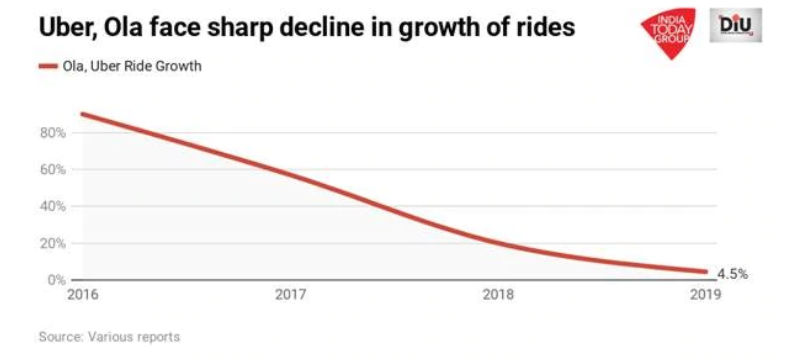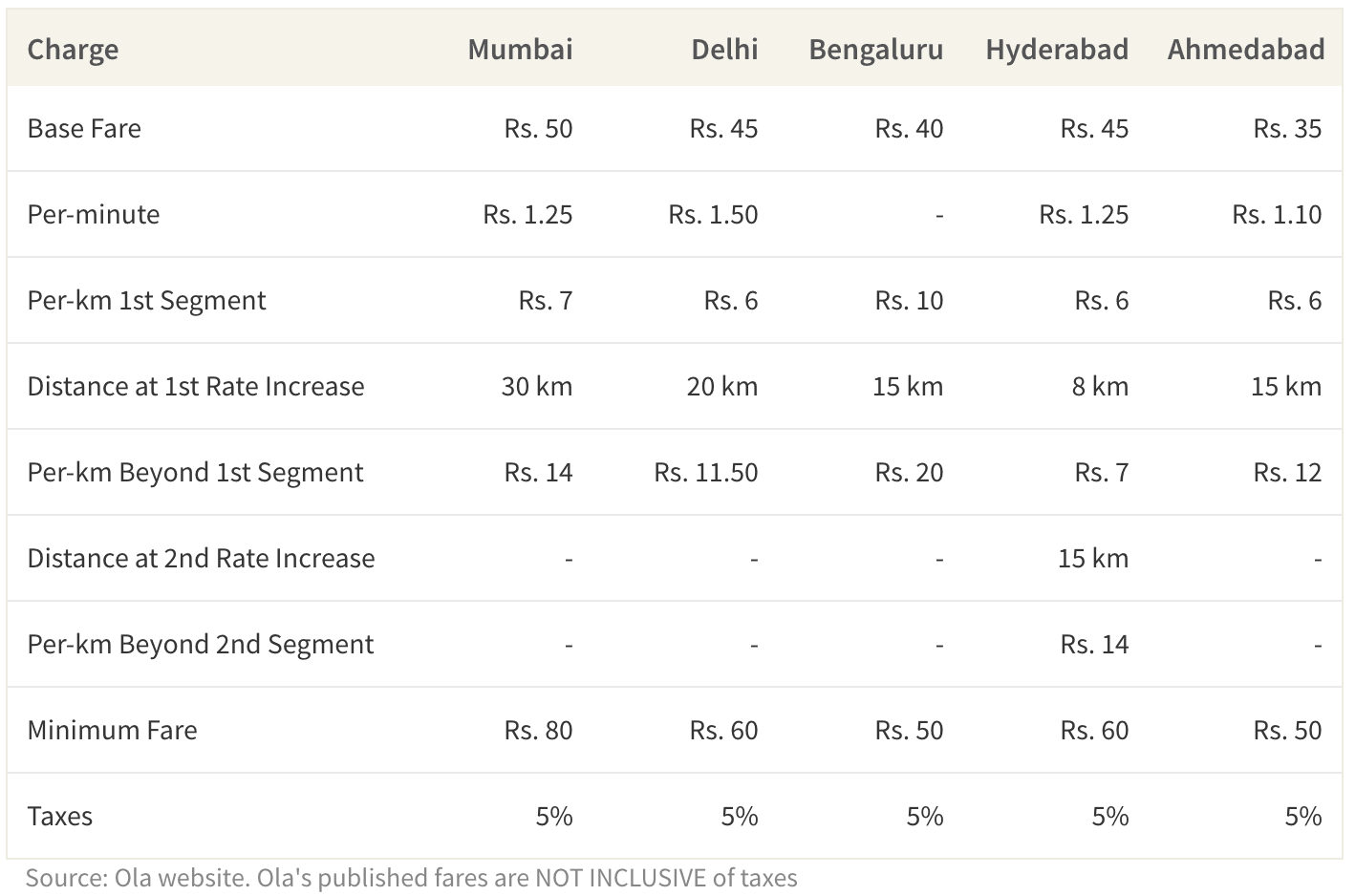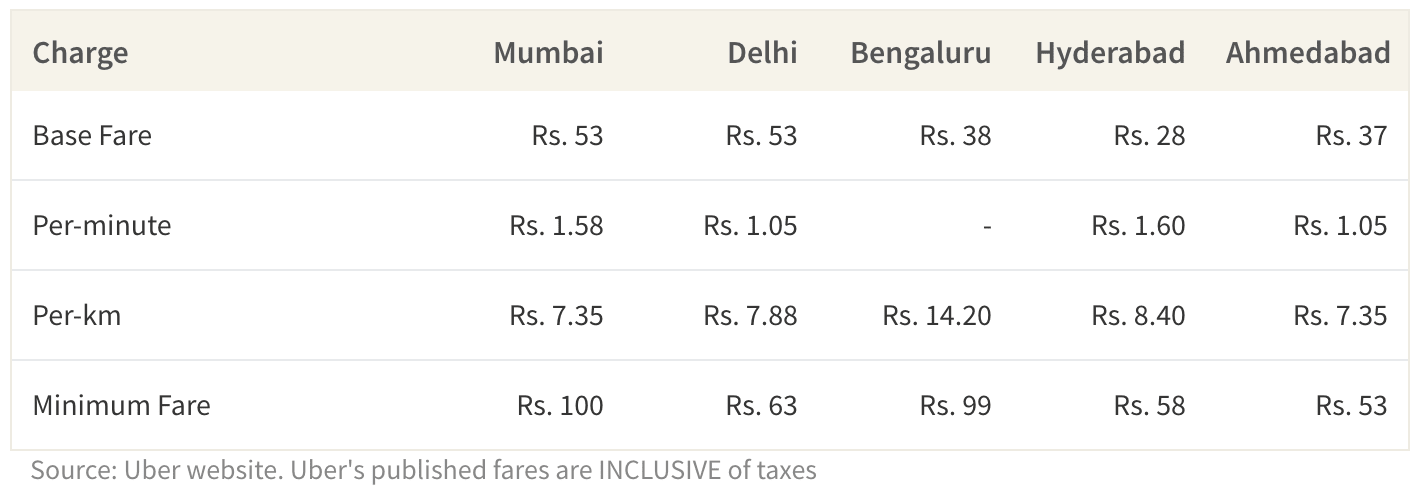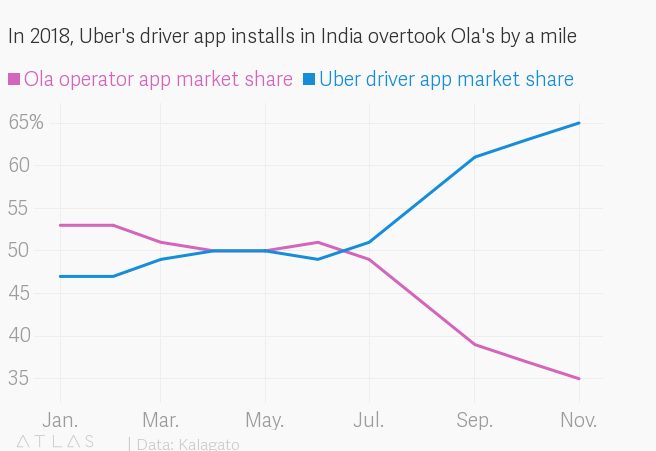Getting cabs in metro cities as well as in semi-urban areas was once a painful phenomenon for the commuters. The ride-sharing services have solved our problems to a great extent, if not wholly. Ola and Uber, the two names synonymous to convenient travels, have dominated the market in India since this decade. These services have replaced the regional cab and taxi services like the yellow taxis of Kolkata. In this segment, like in all other industrial sectors, there is a cut-throat competition. Uber and Ola are competing with each other in gaining the majority of the market share and the trust of the commuters. In this decade, these two services have not only escalated their growth but also travelled southward for quite some times. Let us have a look in their progress trajectory.

In recent times, as of 2019, the number of daily rides have shot up to just 4%, from 3.5 million to 3.65 million. This hints towards higher fares and longer waiting duration. During the rush hour in major cities, two years from now, the waiting period used to be 2 to 4 minutes. Now it has increased to 12-14 minutes. In the last few years, both these ride-sharing services have witnessed a massive growth of 90% in 2016, 57% in 2017 and a meagre 20% growth in 2018. The graph clearly denotes a downward pattern, unfortunately. In 2017-18 in Maharashtra, the number of Ola and Uber cabs was 66,683. But within one year, the number fell drastically to 24,386. Thus showing a reluctance of the cab drivers to register under these ride-sharing services. Their incentives were cut down by 40%. They were unable to make their loan payments on time, which triggered them to leave the ride-sharing services.
According to a top executive of Ola, who preferred to remain in anonymity said, “Ola is betting big on electric mobility for two-wheeler and three-wheeler segments to bring in affordability along with pushing self-drive two-wheeler segment through its bet on Vogo. It is also ramping up its self-drive and rental verticals even as it expands internationally and makes inroads into financial services,” As per a report published by the Economic Times, an investor in the ride-hailing service firm opined that “With Uber and Lyft IPOs and losses under market scrutiny, there is pressure on both Ola and Uber India to become more cautious on their cash burn and explore sustainable modes of business.”
As per the internal reports of the American ride-sharing service Uber, it has conquered 50% of the market share in India, and the nation is the 6th largest market for this company. As per the company’s official report, it has completed 14 million rides in a week in 2019, which is 25% more than the previous year. On 22nd January 2020, Uber has sold its food delivering service to Zomato in an all-stock deal of $350 million. As per the CEO of Uber, Mr Dara Khosrowshahi said in a press conference “India remains an exceptionally important market to Uber and we will continue to invest in growing our local rides business, which is already the clear category leader”. Uber is currently operating in 58 cities in India. It is much lesser than Ola’s reach. But still, it is giving tough times to Ola with its renewed vigour in its core business, now that its food delivering business is acquired by Zomato.
Having said about Uber, let us now take a peek at the homegrown brand Ola. It is functioning under the CEO and founder Bhavish Aggarwal. Ola is currently operating in 250 cities in India, serves 200 million customers across the country, and functions in a network of 2.5 million drivers including two, three and four-wheelers. The service has 28 million weekly bookings recorded 1.5 billion rides in India in 2018-2019. Ola lies ahead of Uber in various segments like the number of app installations, number of cities it operates, Electric vehicle business, varieties of rides, digital wallet etc. But Uber can be one formidable rival with just one core business that is of the ride-sharing service. Uber, has already started expansion strategies by listing buses and metros in cities like Delhi. It has teamed up with Mahindra for launching emission-free electric vehicles. And also launching electric rickshaw by venturing with Sun Mobility.
Uber has launched safety features keeping in mind the safety of women in India. The passenger can keep connected with her family member and ensure safe travel. Ola launched a four-pin password a few years back, but the safety feature of Uber is a big plus in this cab war. The commuters decide on the ride-sharing options based on certain factors like availability, price, safety, reliability, type of vehicle etc. When it comes to pricing, it is observed that Ola Micro is suitable for short distances. Whereas UberGo is suitable for longer distances.


While Ola is engaged in making global expansion in foreign markets like the UK and Australia, Uber is busy strengthening the technological aspect. Uber is revamping the tech teams by hiring qualified and experienced engineers. It launched UberBoat in Mumbai for short trips, UberLite for tier II and III cities with weak internet connectivity, UberAssist for physically challenged commuters. Uber’s will to innovate and dominated the ride-hailing segment is prominent from the actions. Though Ola entered the market in 2010 and Uber India in 2013, the latter is seen successfully catching up with the former in the game. According to a reputed market research firm Kalagato, “The taxi industry is all about availability. If more drivers go to Uber than to Ola, it shows you drivers trust Uber more, and Ola should worry about that”.

Both Ola and Uber are dominating the market, and both of these players are trying hard to optimise market share. If both Ola and Uber are available, then the commuter will select as per the price and availability. If either one is available, then the question of choosing does not apply. In metro cities, both the services operate, but getting one during the rush hour can be challenging. Due to the increasing cabs, the traffic congestion and pollution is rising, and regulatory reforms and transportation penalties can be road bump to these companies.
“Which one is better?” This question does not apply to Ola and Uber as in some cases Uber is excelling, whereas in some Ola is dominating. The ride-sharing services have surely made our commute seamless and convenient. Based on price, availability and personal preferences, commuters are booking their cabs, so the answer to this question might be subjective to some extent.


I really liked your Content & your proposal of Difference between Ola & Uber is just awesome. Keep Posting these topics.
Thank You, Amit.